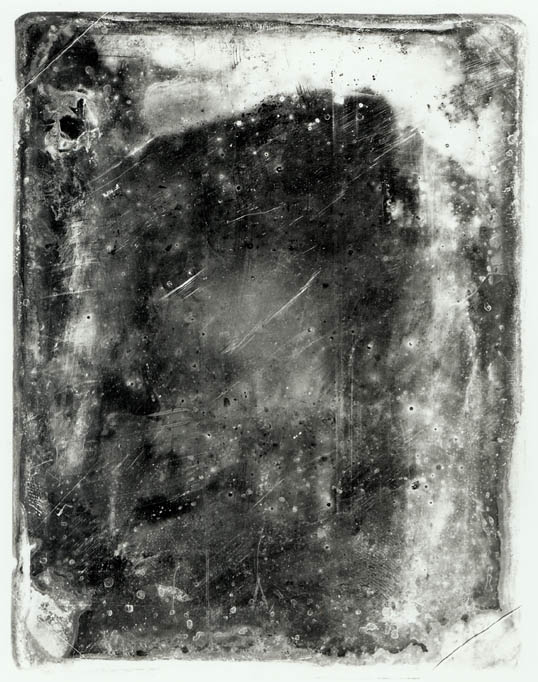
1 | 2 | 3 | 4 | 5 | 6 | 7 | 8 | 9 | 10 "Yet on thinking it over," Barthes continues, "I must ask myself: Who is like what? Resemblance is a conformity, but to what? . . . . Ultimately a photograph looks like anyone except the person it represents. For resemblance refers to the subject's identity, an absurd, purely legal, even penal affair; likeness gives out identity 'as itself,' whereas I want a subject--in Mallarmé's terms--'as into eternity transforms it.' Likeness leaves me unsatisfied" (100-102). Photography separates an object--a being--into positive and negative images. While the 1847 and the 1855 (?) daguerreotypes featured here are positive images created while their subjects were alive, the negatives used to reproduce these images were very possibly developed after their death(s). The reversal of the now standard order of the photographic process--i.e., negative to positive--results in the production not of positive prints, but in the mysterious reproduction of endless negatives. Here, the second flash of light promises only death; both images are post-mortems. Rather than an evidential function, the photographs of Dickinson and the woman who bears such a distinct likeness to her as we imagine she would have looked in the future of an earlier photograph serve an aporetic function: they affirm her absence--irrevocable but for a miracle--and announce her final escape from figuration. When Dickinson wrote, "I had no portrait now," to what "now" did she refer if not to the moment--our own as much as Higginson's--in which she hoped to evade the finality of identification, the "arrest of interpretation [in which] the Photograph's certainty resides" (Barthes 107), by refocusing our gaze on the region between perception and imagination--that is to say, the region of poetry? Light passes easily through the negative of a photograph and still more easily through the screen of my computer on which images of Dickinson and of her writings appear awash with the luminosity of liquid crystal diode. The beauty of this almost undifferentiated ground, in which text and screen exist in a seamless continuum, overpowers the material objects within it and makes them appear disembodied--suspended or floating someplace before or perhaps just behind my eyes. Each time I make an effort to refocus my eyes, to penetrate the middle or the far ground, moreover, I do not have an experience of deep recession but, instead, an experience of absolute distance--of optical otherness--separating myself from the object of my gaze. I am looking at the vanishing point, the reduction of all lines of sight to zero. Can we believe her without? Yes, for without is where she is.
Unidentified portrait, c. 1844 and 1860. Photographer unidentified.
No image visible. Reproduced courtesy of The Library of Congress.   home | introduction | dickinson focus texts | texts on photography | image gallery | critical perspectives | timeline | questions | bibliography | acknowledgements  |

